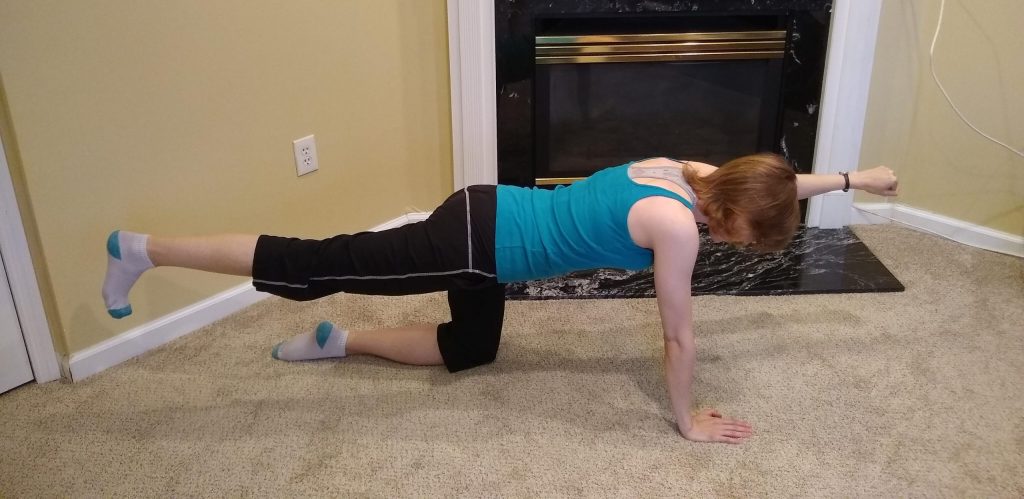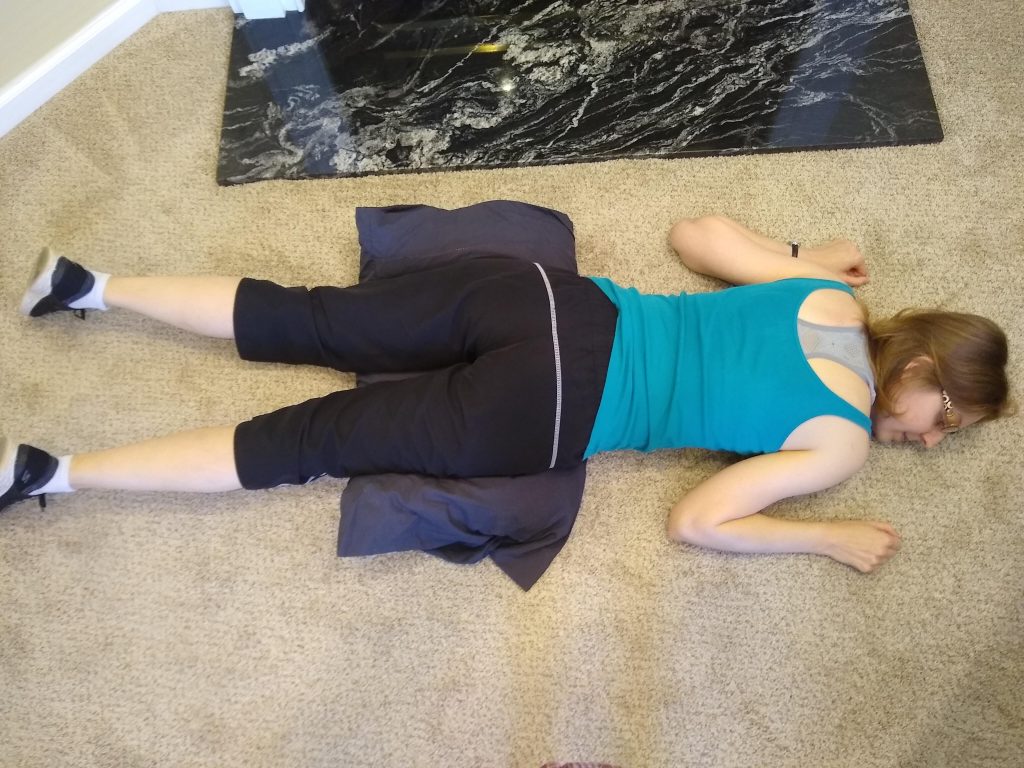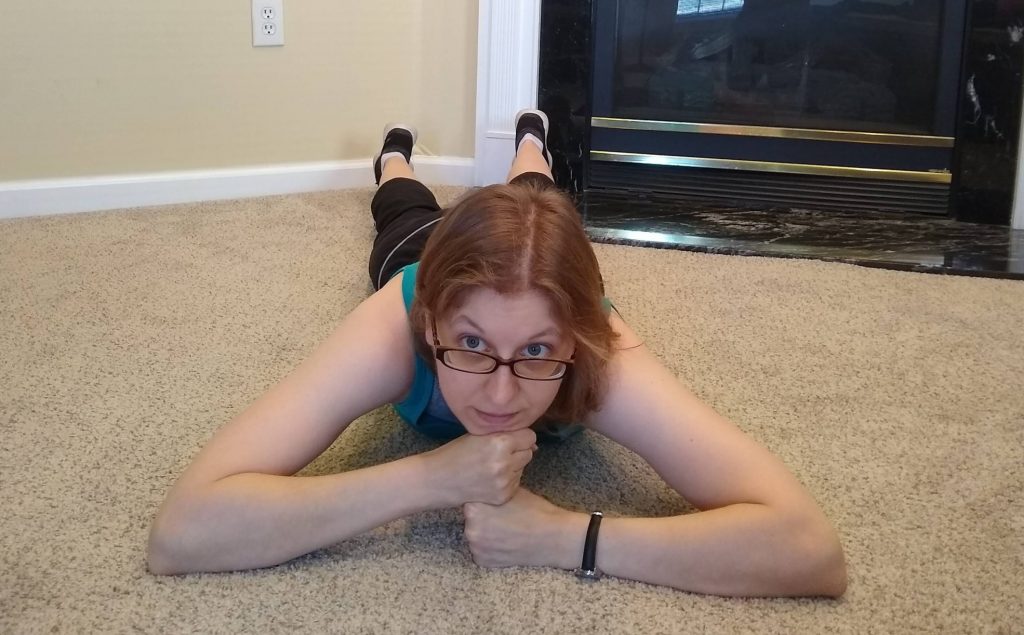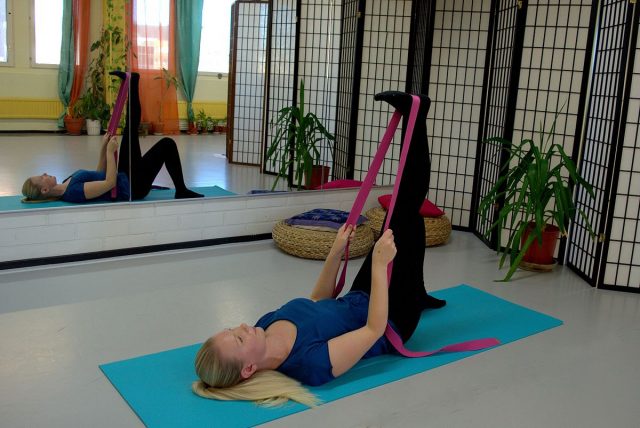This is the summer that broke the pattern. This summer, I actually…got better. Not all the way better, but noticeably better. Better enough that I can, with only a slight fear of jinxing myself, say I’m in…recovery.
My Back Story
My current bout of sciatic started in April 2017, and as the years passed, I noticed a seasonal pattern. When the weather turned warm in the spring, my sciatica would heat up along with it, and by mid-summer I’d descend into some fiery lower level of Hell. In the fall, my sciatica would ease up a bit, and winter seemed to cool the angry nerve.
But the overall direction, year after year, was downward. Each season was slightly worse than the year before. In order to stay at the same level of daily functioning, I’d have to cut out more and more pieces of my daily life, until I had no choice but to describe myself as “disabled.”
As the spring of 2020 crept on, I felt myself worsening again. I was waking up several times a night with cramps, and when I lay down, the twitches and electric shocks zapped my legs. I felt like a dead frog in a science experiment.
A terrible dread welled up inside me. I didn’t know what the lowest level of Hell looked like, and I didn’t know how much suffering I was capable of enduring, but I sensed I was on course to find out.
I had already cut out every activity I could think of that brought me pain. I didn’t sit. I didn’t drive. And as of January, I didn’t work. I had no pieces of my life left to sacrifice. It seemed my only option was to wait for the pain to overtake me.
My Diagnosis and Treatment Goals
I learned that I had a relatively uncommon condition: an underhooked sciatic nerve (due to an L5-S1 disk herniation). I also likely have some joint instability.
Most (roughly 95%) people with sciatica have an overhook. When they slouch and pull their head forward, pain increases. I’m the opposite. If I’m hunched over (while staring at my phone, for example) my sciatica will ease up.
Since I can’t sit down, this is an awfully convenient pain feature. When I work lying down, I have to keep my neck hunched forward awkwardly anyway, so at least that doesn’t make my sciatica worse.
To deal with my spinal instability, I needed to work on stiffening my spine by engaging the muscles in my torso. The Big 3 exercises are critical for building muscular endurance, but I also needed to learn to tune my muscular brace. The goal is to activate the muscles just enough to support the spine with each activity.
My New Treatment Plan
In May 2020, I started following a new plan, based on the recommendations of Stuart McGIll and his books, Back Mechanic and Low Back Disorders. My new program doesn’t sound particularly revolutionary, but it works.
New parts of my program:
- I do the McGIll Big 3 every day.
- I practice good spine hygiene.
- Every night (and occasionally during the day) I lie on my stomach with a pillow under my hips.
- I do cat-camel back stretches.
- I stopped all other stretches (especially hamstring stretches).
Things I was doing before that I still do:
- I still don’t sit down.
- I still walk 2-3 hours a day. (I experimented with lowering the amount of walking, but I still find 2-3 hours is the ideal amount.)
- I still eat/drink massive amounts of salt, and drink massive amounts of water.
- I still hang from a pullup bar from time to time.
Let me break down the new parts of this plan, because some of the details are not obvious.

The Big 3
McGill recommends doing three exercises every day:
- The bird dog
- The side plank
- The curl up
You’re supposed to do three sets of each, and hold each rep for 10 seconds. McGill suggests using an inverted pyramid-style rep pattern. For example, do 6 reps during the first set, 4 reps during the second, and 2 reps during the third.
I do 9-7-5, mostly because I like odd numbers. I also settled on 9 as my top limit because it takes me about 30 minutes to do this routine every day, which is about as long as I want to spend on it.
McGill makes the important point that patients should focus on being equally good at each exercise, rather than becoming a superstar at one or two. The muscles that are trained during the exercises work together to stabilize the spine. If one is weaker than the others, you’re setting yourself up for injury.
When I started, I realized I could jump right to the advanced versions of the bird dog and side plank, and even these weren’t terribly difficult. The curl up, however, was killer. Even now, after four months of practice, I have to pay attention to keep myself from cheating. I can do an advanced variation now, but I certainly wouldn’t call it easy.
My husband, on the other hand, couldn’t understand why the curl up was hard, though I certainly did my best to tell him. He found the bird dog and side plank much more challenging.
Good Spine Hygiene
The term “spine hygiene” refers to how people hold their spines every day. It includes both static poses (sitting, laying down, standing), and movement patterns (lifting boxes at work, getting books out of a backpack, getting in and out of a chair, etc.).
Good spine hygiene means moving and holding your spine in such a way that you avoid exacerbating an injury. Or, if you’re lucky enough to have a healthy spine, avoiding injury in the first place.
One of the key aspects of good spine hygiene is establishing good movement patterns. These are hard to describe in words, but McGill’s books (especially Back Mechanic) are full of excellent illustrations.
Bending over was uncomfortable to me, as it is for many other back pain patients. In order to avoid a pain-inducing forward bend, McGill suggests three movement tools:
- The shortstop squat
- The lunge
- The golfer’s lift
Although these movements made sense, I struggled to encode them in my muscle memory. After all, I had been following my own set of movement patterns for over thirty years. Swapping them out with better alternatives was not as straightforward as drawing a new hand in poker.
At first, I made a conscious effort to practice whenever I was putting the dishes away. This was an excellent time to practice, since I often had to bend over to put things away on lower shelves. I also practiced these moves over and over during pauses in my Big 3 routine.
In time, they became more automatic, and I began to associate each move with certain regular tasks. I sunk into a shortstop squat to plug in my phone. I lunged to retrieve my yoga strap, and plucked the TV remote off the coffee table with a golfer’s lift.* These moves felt less uncomfortable than bending my spine, so once I figured out which move to pair with which task, it was easy to find the motivation to continue.
*From McGill’s books, I take it the lunge is usually a tool to help people get up and down to the floor. But I find it the most comfortable of the three moves, so I use it often. The golfer’s lift is meant to be used when picking light objects off the floor. But I find it awkward, so I only use it to pick up objects placed above floor-level. This is my own quirk, not McGill’s advice.
The one thing I still can’t properly manage is putting on my socks. In order to do this without destroying my spine, I’ve resorted to lying on my back on the bed, holding the sock out as best as can, and trying to wriggle my foot into it. It’s like trying to shove a fish into a water balloon, but it usually gets the job done.
A Pillow Under the Hip
As I said, this particular posture is helpful because I have an underhooked sciatic nerve. It doesn’t look like much, but it seems to help. I often notice a distinct before-and-after difference in my pain levels.
Since this is hard to find illustrations for, and since I doubt I’m screwing it up terribly, I’ll include a picture of myself here. Note that I always keep my head to the right. This is more comfortable than putting my head to the left, which has to do with the position of the disc bulge and how it presses on the nerve. But I don’t have a solid understanding of the mechanisms, so I won’t offer an explanation beyond, because it feels better.

I hold this for at least three minutes. Often, I get so comfortable that I stay in this position for considerably longer.
For the record, this is what I’d do if I had a normal, overhooked sciatic nerve.

Cat-Camel
McGill argues convincingly that back stretches can be risky. The only mobility exercise he recommends is the cat-camel. Since there is no compressive force on the spine, the stresses are relatively low.
As he notes in Low Back Disorders, “On occasion, a patient will want to mobilize the spine. There are also therapeutic reasons for mobilizing the spine through a range—for example, gentle movement postsurgery to prevent adhesions and short scarring of neural and connective tissues. We have quantified that the most spine- and disc-sparing method is to adopt the hands and knees position and perform the cat-camel exercise. This unloaded range of motion cannot be achieved in a standing posture and is suited to those concerned with safety.”
No Stretching
I didn’t mind the other changes to my routine. Sure, it was a nuisance to fit in the Big 3 every day, but the payoff was worth it. Good spine hygiene seemed like a worthwhile habit to adopt whether it fixed my back or not. And laying down on a pillow was no great sacrifice. But giving up stretching? I wanted to bail.
Almost since the beginning of my ailment, I had counted stretching among my most important therapies. Especially hamstring stretches. Not only was it recommended in nearly every article I’d read about sciatica treatment, but it felt incredible, and seemed to quiet down my nerves. I recommended a book about it on my blog.
But McGill was clear in his proscription. In Low Back Disorders, he had something to say about stretching and sciatica: “Tragically, cases of foot pain, ankle pain, or leg pain caused by lumbar nerve compromise are often treated with stretching in the belief that muscle tightness rather than neural tension is the culprit. This just keeps the nerve angry.”
Though I harbored secret reservations, I agreed to eliminate stretching for a few weeks. I reasoned that, if I got worse, at least I’d have conclusive evidence that stretching worked.
To my surprise, I didn’t immediately shrivel up into a mewling ball of pain. After a few days, I realized I hadn’t gotten noticeably worse. After a few weeks, I realized my nerve was quieter at night. The first time I lay down to sleep and didn’t feel my sciatic nerve pulsing, I was so excited I nearly cried.
One Thing That Didn’t Work: Nerve Flossing
Nerve flossing is a technique that McGill recommends in his books, although he cautions that patients are “Tickling the dragon’s tail.” There’s a chance that nerve flossing will make their sciatica worse.
Before reading McGill’s books, I didn’t know that my sciatic nerve was supposed to slide back and forth through the openings in my vertebrae. But it is. In Low Back Disorders, McGill writes:
“Excessive tension in the nerve is the cause of sciatica. Normally, the cord nerve roots travel through the foramens of the neural arch of each vertebra, and their sliding excursions are substantial with spine flexion, hip flexion, and knee extension. According to Louis (1981), the nerve can travel well over a centimeter (over ½ in.) during some of these movements. Thus, if a nerve root is impinged and cannot slide, any of the postures that would normally pull that nerve root through the foramen will increase nerve tension. Instead of moving, the nerve is stretched. Tension on such a nerve can be increased from the cranial end with simultaneous cervical flexion because the entire spinal cord moves slightly with cervical flexion and thus pulls at the nerve roots all along their length. This is the basis for the tests for nerve tension presented in chapter 9.
“Recently, scientists have suggested that nerves have the ability to create their own pathways as long as they can move. They seem to have some chemically based ability to dissolve—over time—tissues impinging them, although the exact molecular mechanism remains elusive. The idea of flossing is to pull the cord and nerves from one end only, while releasing at the other, and then to switch the pull-and-release direction. In this way the nerve roots are flossed through the lateral foramina and in fact along their entire length. Thus, by working the nerves back and forth in whatever limited range they can manage in spite of impingement, we facilitate the dissolving of the impingement and the gradual release of the nerve to once again move freely (this approach was proposed by Butler, 1999). This flossing action is accomplished with coordinated hip, knee, and cervical motion.”
Don’t let the long words and paragraphs scare you – in practice, nerve flossing is easy to understand and do. I pretend that I’m kicking myself in the head over and over.
Usually, nerve flossing is done while sitting on a high chair or a table (to allow the foot to swing freely). I wasn’t willing to sit down, so I used a standing variation.
I make no claim to be an expert at nerve flossing, but since the standing version isn’t common, I made a video with a few tips. Take this with all the standard I’m-not-a-doctor caveats.
Like the curl up, nerve flossing doesn’t look like much from the outside, but I could feel the difference. When I tried my first rep, I noticed an immediate effect. Strange sensations prickled along the length of my nerve. It wasn’t painful, and in fact, it was mildly pleasurable, like scratching an itch. I wasn’t sure if these sensations were a good thing or a bad thing, but I was now sure that nerve flossing was effective, in the sense of having some effect.
A few hours later, I still couldn’t make up my mind about whether I was better or worse. I tried nerve flossing on three consecutive days before concluding that it made me slightly worse.
McGill also points out that even in the same patient, nerve flossing might help or hinder recovery depending on the timing. Early in recovery, it might exacerbate pain, but a few months later, it may be helpful. I haven’t given up on the concept completely, and I’ll probably try it again in a few months.
Helpful Videos
Some of the exercises and movements I mention in this article are difficult to convey through words. Fortunately, there are some excellent videos out there that demonstrate the concepts. Here are a few that I recommend.
McGill Big 3 + Bonus Core Exercise: This video throws in a bonus exercise – stir the pot is not actually one of the Big 3 – but it does give a pretty good instructions for the bird dog, side plank, and curl up.
Shortstop Squat + Golfer’s Lift: Two important movement techniques, and when to use them.
What Causes Disc Herniations?: Dr. McGill explains the mechanisms of injury.

Thank you for the detailed post!
I’m going to try some of these tips I’m 69 & have been dealing with sever sciatica for 3 years it came about after having nerves burned big mistake..thanks again for the tips
Oh, I’m so sorry you’ve been dealing with sciatica for that long! Also, I don’t what burned your nerves, but that doesn’t sound fun.
A great website, really informative. Lovely to know it’s not just me walking and nerve flossing , bird doing and curling.
What a fantastic synopsis! You’re not a doctor but now your knowledge of these things could rival many in the medical field.
I will tell you that the best position for nerve flossing is supine. Generally having help is best (someone else does the lifting of the leg).
I recently discovered that I am also suffering from an “underhook”
I will be trying your recommendation (pillow under hips). I was curious if you have any other tips and tricks to deal with an underhook?
This was good information. I’ve been treating sciatica using the same approach, but self tests for under/overhook were totally inconclusive. After reading your description, it seems I have pretty much 99% matching symptoms and experiences. The underhooked nerve explaines the couple of oddities that didn’t make sense.
Hope you are getting better.
All the best, Peter